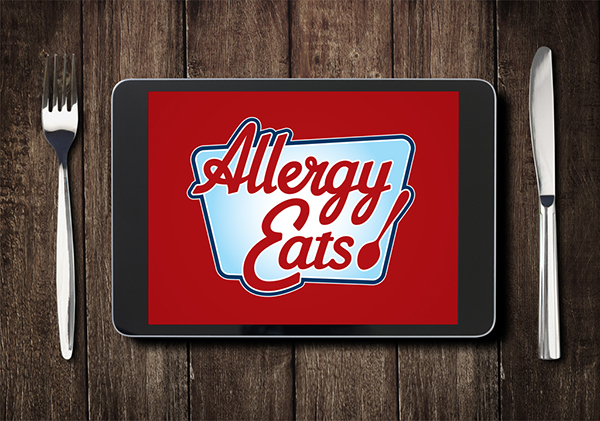Dining Out with Food Allergies: Tips for Restaurateurs from the 2014 AllergyEats Food Allergy Conference
The AllergyEats team recently held an educational event, the AllergyEats Food Allergy Conference for Restaurateurs & Food Service Professionals, in New York City.
This conference – our third annual event – featured an all-star roster of speakers, who provided valuable takeaways for attendees. Our panelists, including allergy-friendly restaurateurs, food allergy trainers, prominent physicians/allergists and others, spotlighted food allergy basics, training programs, procedures & protocols and best practices.
 Food Allergy 101
Food Allergy 101
Two renowned physicians – Scott H. Sicherer, MD, Chief of the Pediatric Division of Allergy and Immunology at Mount Sinai Hospital, and Michael Pistiner, MD, MMSc, Pediatric Allergist for Harvard Vanguard Medical Associates – shared insights about food allergy basics, how to recognize an allergic reaction and what to do if one occurs. These allergists described the most common food allergens, also known as the Big 8: milk, egg, soy, shellfish, wheat, fish, nuts, and tree nuts. They also explained the different types of allergic reactions that could occur, from life-threatening anaphylaxis, where a person’s throat could swell and they could have trouble breathing, to gastrointestinal distress (vomiting, diarrhea, bloating, gas) and skin reactions (hives, rashes). Reactions can occur when a food-allergic person ingests even the tiniest amount of their trigger food – the size of a grain of salt. Some people can even have a reaction just from breathing in the steam of a cooked trigger food. The allergists also pointed out how to read food labels – showing the conference attendees that ingredients are often disguised by alternative names. Moreover, they emphasized that myths like using heat/deep fryers to “kill” allergens were simply not true. An allergen is an allergen, no matter what temperature it’s cooked at or how small it is.
 Insights from a Food Allergy Mom
Insights from a Food Allergy Mom
Food allergy mom Lisa Giuriceo, a support group leader with the Food Allergy and Asthma Support Group of North Jersey, gave a heartfelt description of her daughter Patricia’s experiences with multiple, severe food allergies. Sick as a baby with stomach issues and mysterious rashes, Patricia was soon diagnosed with a variety food allergies. Lisa described how that diagnosis changed life as their family knew it. Over the years, Patricia, now a teenager, has had to travel with epinephrine, carefully avoid her trigger foods and be extremely cautious everywhere she goes. Lisa described the intense fear that resulted from Patricia’s first anaphylactic reaction, which happened when she accidentally ingested an allergen at a restaurant. Lisa said that she has found a few restaurants where her family is comfortable dining, and emphasized that the food allergic community is extremely loyal when they find a place that works for their needs.
 Becoming a Food Allergy-Friendly Restaurant
Becoming a Food Allergy-Friendly Restaurant
The restaurateurs on our panel – Matt Abdoo, Chef de Cuisine at Del Posto, Robin Hamm, Director, Food Safety, Quality, and Commercialization at Red Robin International, Inc. and Jared Schulefand, Owner of Home – discussed the food allergy protocols that they’ve implemented in their restaurants. Some of their most helpful tips included proactively asking guests whether they have food allergies – Del Posto even asks about allergens when a reservation is made – using colored plates or frill picks to visually identify allergy-friendly meals, and designating allergy-friendly prep and pantry areas. Red Robin also offers an online interactive allergen menu, which simplifies the guest experience, especially for guests with multiple food allergies. It’s accessible anywhere, anytime by smart phone, tablet or laptop. Guests can choose their allergens/ingredients to avoid, and get a pop up of things that they can (or can’t) have. Additionally, the panelists talked about stocking their commercial kitchens with allergy-friendly products like non-dairy milks, gluten-free breads and pastas and pre-packaged desserts free of the Big 8 allergens.
 Then, prominent food allergy trainers Betsy Craig, Founder and CEO of MenuTrinfo and Julie Kuriakose, MD, Co-Founder of Hudson Allergy, discussed proven ways that establishments can elevate their food allergy protocols. Betsy told the restaurateurs that 1 in 10 diners has a food allergy or intolerance – and that the number of special dietary requests at restaurants is growing rapidly. Dr. Kuriakose told the audience that 99% of the time that she goes out to eat, she is never asked if she has food allergies. Simply by starting off the meal with this question would be the first step towards preventing an allergic reaction. She also suggested that, in the event of an allergic reaction, patrons should ask the restaurant to keep the meal wrapped up so that the customer can look for clues later as to what may have been the trigger. This is particularly helpful for someone who experiences a reaction for the first time. The trainers also offered advice on preventing cross-contamination and recommended that food service professionals designate special allergen-free equipment – such as fryers, pans, utensils – as well as separate pantry and prep areas. They also discussed “hidden” ways that cross-contamination could occur – such as through sanitizing dip buckets, on high chair trays and on table surfaces – and advised thorough cleaning and sanitizing of all items before serving a food-allergic guest.
Then, prominent food allergy trainers Betsy Craig, Founder and CEO of MenuTrinfo and Julie Kuriakose, MD, Co-Founder of Hudson Allergy, discussed proven ways that establishments can elevate their food allergy protocols. Betsy told the restaurateurs that 1 in 10 diners has a food allergy or intolerance – and that the number of special dietary requests at restaurants is growing rapidly. Dr. Kuriakose told the audience that 99% of the time that she goes out to eat, she is never asked if she has food allergies. Simply by starting off the meal with this question would be the first step towards preventing an allergic reaction. She also suggested that, in the event of an allergic reaction, patrons should ask the restaurant to keep the meal wrapped up so that the customer can look for clues later as to what may have been the trigger. This is particularly helpful for someone who experiences a reaction for the first time. The trainers also offered advice on preventing cross-contamination and recommended that food service professionals designate special allergen-free equipment – such as fryers, pans, utensils – as well as separate pantry and prep areas. They also discussed “hidden” ways that cross-contamination could occur – such as through sanitizing dip buckets, on high chair trays and on table surfaces – and advised thorough cleaning and sanitizing of all items before serving a food-allergic guest.
 Our panel of chefs and authors – Beth Hillson, Author of Complete Guide to Living Well Gluten Free and Food Editor for Gluten Free & More, Lori Sandler, Owner of Divvies and Author of The Divvies Bakery Cookbook and Colette Martin, Author of The Allergy-Free Pantry – all have food allergies or intolerances themselves (or in their families), so they spotlighted their own good and bad experiences dining out with food allergies. For instance, they shared some of the mistakes that restaurants have made with their special orders, such as carrying a woven, open bread basket on top of a gluten-free meal, contaminating the order with bread crumbs. They suggested doing things like having ingredients on hand to make home-made allergy-friendly appetizers, desserts, and salad dressings. They also advised restaurateurs to keep a list of the ingredients of items that are made outside of the restaurant for easy food label reading, to set aside some proteins (fish, chicken, etc.) that are not marinated or coated in allergens so that they can be prepared with a safe oil or seasoning, and lastly, at buffet-style meals, to simply put up signs if items are made allergen-free. They emphasized that all of these little things are easy and inexpensive to do, and yet go a long way towards encouraging a repeat visit from a food allergic diner.
Our panel of chefs and authors – Beth Hillson, Author of Complete Guide to Living Well Gluten Free and Food Editor for Gluten Free & More, Lori Sandler, Owner of Divvies and Author of The Divvies Bakery Cookbook and Colette Martin, Author of The Allergy-Free Pantry – all have food allergies or intolerances themselves (or in their families), so they spotlighted their own good and bad experiences dining out with food allergies. For instance, they shared some of the mistakes that restaurants have made with their special orders, such as carrying a woven, open bread basket on top of a gluten-free meal, contaminating the order with bread crumbs. They suggested doing things like having ingredients on hand to make home-made allergy-friendly appetizers, desserts, and salad dressings. They also advised restaurateurs to keep a list of the ingredients of items that are made outside of the restaurant for easy food label reading, to set aside some proteins (fish, chicken, etc.) that are not marinated or coated in allergens so that they can be prepared with a safe oil or seasoning, and lastly, at buffet-style meals, to simply put up signs if items are made allergen-free. They emphasized that all of these little things are easy and inexpensive to do, and yet go a long way towards encouraging a repeat visit from a food allergic diner.
 Dining “In” with Food Allergies on College Campuses
Dining “In” with Food Allergies on College Campuses
Robert Landolphi, Culinary Development Manager at the University of Connecticut, an award-winning allergy-friendly college campus, spoke about the unique challenges that come with university dining halls, where they need to safely serve students three meals per day, seven days per week. UCONN has over 11,000 recipes in their database and they label each and every one if they contain any of the Top 10 allergens. He spotlighted his university’s unparalleled food allergy protocols, which include made-to-order allergy-friendly meals, call ahead service for food-allergic students, establishing specific dining halls where peanuts and tree nuts aren’t served, and utilizing vendors that sell allergy-friendly products. He also described how they leverage technology to better serve food-allergic diners, with interactive, online menus for each dining hall and a free app to let students access important information about menus and ingredients while on-the-go. Robert said that, frequently, families will meet with his team before making their final decision about which college their food-allergic child will attend. He asks the families to come to the meeting with a food journal so that his team can create menus around the items that are both safe and appealing to the food allergic student.
 Business Case for Becoming Allergy-Friendly
Business Case for Becoming Allergy-Friendly
Then I presented the financial benefits of becoming allergy-friendly, explaining how accommodating establishments can significantly boost their customers, loyalty and profits. My background is in finance, so I was able to calculate some compelling statistics about how accommodating restaurants can win the large, loyal food allergy community – as well as their friends and families. For instance, I highlighted Walt Disney World, which has become the “gold standard” for accommodating food-allergic guests. In 2005, Disney World served 52,000 food-allergic guests, and by 2009, that number had risen to 192,000 – a four-fold increase in just four years. And by 2013, there had been a 7x increase in seven years, which is astronomical! With that in mind, consider how much an accommodating restaurant could grow their customer base and profits! Up to 30% of people in this country believe they have a food allergy, and even people who aren’t gluten intolerant are jumping on board with the “trendy” gluten-free lifestyle. The Wall Street Journal recently reported that 20% of guests at restaurants have special dietary needs, so restaurants should realize that accommodating the food allergy community is a huge market opportunity.
Top Tips from the Conference
Some other key takeaways from the conference included:
• Ongoing training is imperative. In-depth, ongoing food allergy training should be required for all staff, and be more comprehensive than just showing a short, basic food allergy video. Train staff continuously – ideally more than once a year – and when new team members are hired, immediately educate them about your food allergy protocols.
• Protocols can be customized. There’s no “one size fits all” set of accepted food allergy protocols. Customize your approach in ways that work best for your employees and guests. It doesn’t matter if you serve allergy-friendly meals on square plates or in yellow baskets – what does matter is that you design and implement effective procedures that can be followed by your staff.
• Becoming allergy-friendly is good for business. The food allergic guest is the “veto” vote. Accommodating food-allergic diners can drive a substantial profit increase for restaurateurs of up to 24% or more! When restaurants work hard to accommodate food-allergic diners, these guests (as well their family and friends) become loyal customers and vocal advocates, recommending the restaurant through word-of-mouth, online reviews and high ratings on the AllergyEats site and app. Treat food-allergic guests well and you’ll have customers for life.
• Allergy-friendly protocols are vital for all commercial kitchens – not just restaurants’. Just like restaurants, there’s a dichotomy in college dining halls between those who understand and can accommodate food-allergic diners and those that don’t.
• The customer should own their food allergies. The primary responsibility for safety lies with food-allergic diners, yet statistics show that nearly half of people with food allergies don’t disclose their allergies when eating at restaurants. Whatever your reason for not sharing your food allergy concerns is not worth the risk of an allergic reaction; communicate and ask questions! The restaurant doesn’t want harm to come to you and you certainly don’t want to put yourself in that situation.
The event was sponsored by Mylan Specialty L.P. as well as Nation’s Restaurant News, The New York State Restaurant Association, The Connecticut Restaurant Association, MenuTrinfo and Gipsee.


Comments